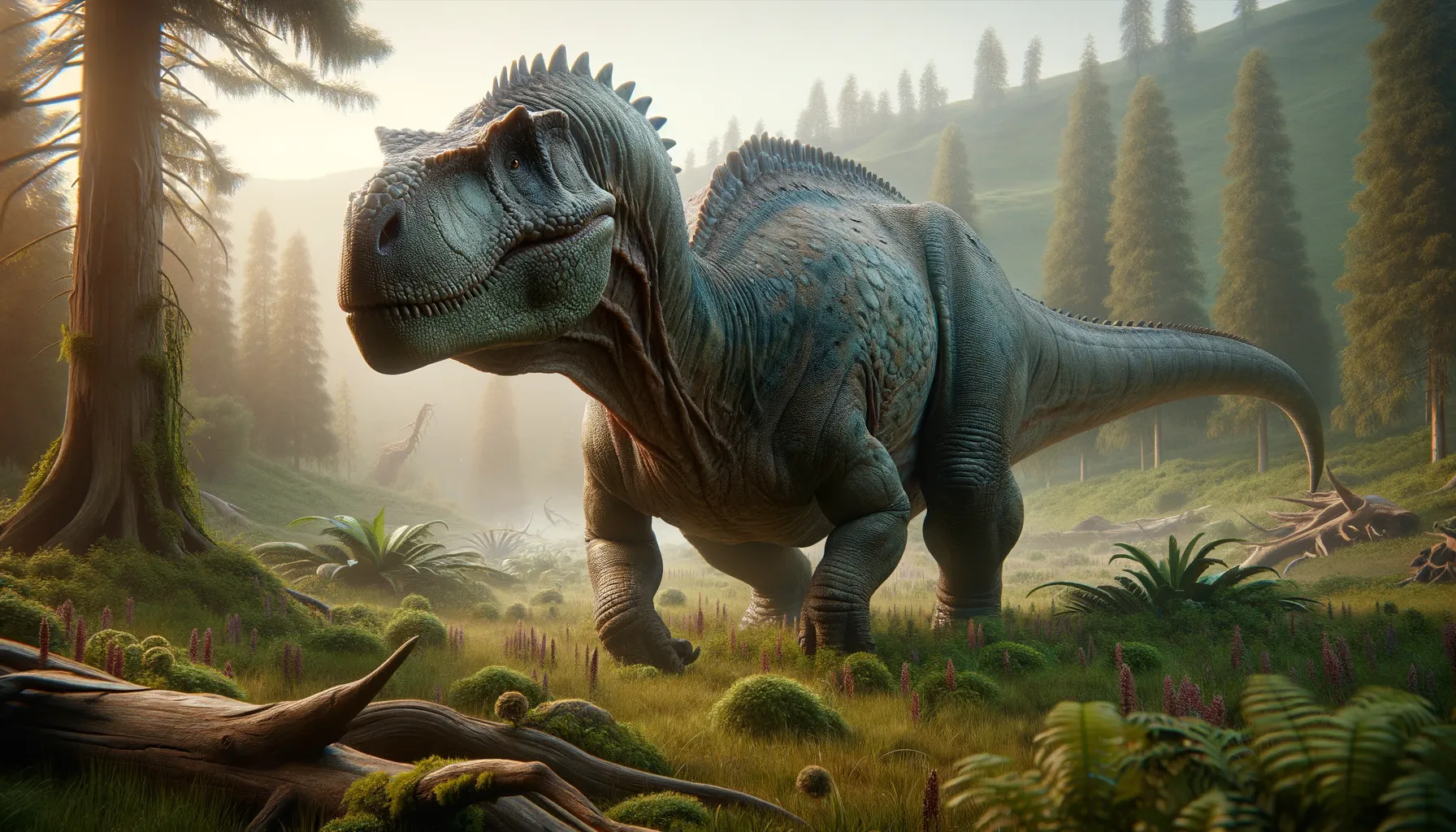
Panoplosaurus
Built like a tank, armored for survival.
Period
Cretaceous
Length
About 20 to 23 feet long.
Height
Around 6 feet tall at the hip.
Weight
Approximately 3.5 to 4 tons.
Panoplosaurus was a stocky, armored dinosaur that roamed the Earth during the Cretaceous Period. Known for its heavy armor plating, it was built for protection against predators. This herbivore used its strong limbs and low-slung bodies to browse for vegetation. Unlike some of its spiky relatives, Panoplosaurus did not have tail clubs, relying on its rugged armor for defense. Its fossils have helped scientists understand more about armored dinosaur lifestyle and habitats.
Diet
Panoplosaurus was a herbivore, feeding primarily on low-lying vegetation such as ferns and other prehistoric plants. Its beaked mouth was well-adapted to cropping tough plant material, enabling it to thrive in its lush environment.
Hunting
Though not a hunter, Panoplosaurus was well-equipped to defend itself using its thick, protective armor against predators. It relied on its size and strength to deter attackers rather than pursuing prey.
Environmental challenges
The Panoplosaurus faced threats from large carnivorous dinosaurs that roamed the same regions. Maintaining its protective armor required substantial energy, which demanded a constant intake of food. Environmental changes such as shifts in climate and vegetation types also posed challenges to its survival.
Speed
Slow-moving, as it was heavily armored.
Lifespan
Estimated to live several decades.
First discovery
First discovered in Alberta, Canada in 1917.
Fun Facts
- Panoplosaurus means 'fully armored lizard', named due to its heavy armor plating.
- This dinosaur lived during the Late Cretaceous period, about 76 to 73 million years ago.
- Unlike its relatives with clubbed tails, Panoplosaurus had a relatively simple tail.
- Fossil evidence suggests it was a herbivore, feeding primarily on low-lying plants.
- Panoplosaurus fossils have been mostly found in North America, particularly in Canada.
- The armored body of Panoplosaurus helped protect it from predators like the fierce Tyrannosaurus rex.
- It was one of the last non-avian dinosaurs to roam the Earth before the mass extinction event.
Growth and Development
Panoplosaurus likely hatched from eggs, starting as small, vulnerable young. As it matured, its body developed extensive bony armor and a large, robust frame, key to its survival. Growth was likely sustained by a readily available, plant-based diet, allowing it to reach full size relatively quickly.
Habitat
Panoplosaurus inhabited forested and floodplain regions with abundant plant life, providing ample food supplies. These environments helped support its large size by offering both sustenance and shelter. Rich groundwater sources in its habitat regions contributed to lush vegetation growth.
Interaction with other species
Typically a solitary or small-group dweller, Panoplosaurus coexisted with various herbivorous and carnivorous species. Its primary interactions involved evading predators and competing with other herbivores for food. Its presence contributed to the ecosystem's balance by affecting plant life through grazing.
Natural lifespan
Panoplosaurus lived an estimated natural lifespan of 30 to 40 years.
Reproduction
Reproduction involved laying eggs, likely in nests built with vegetation for protection. Parental involvement might have included guarding the nest from predators until the young hatched.
Social behaviour
Panoplosaurus was generally solitary, occasionally forming small groups for feeding. Their armored nature suggests they were more self-reliant than socially collaborative species.
Fossil locations
Panoplosaurus fossils have primarily been found in Alberta, Canada, within the Dinosaur Park Formation. These findings have provided insight into the geographical distribution and habitat preferences during the late Cretaceous period.
